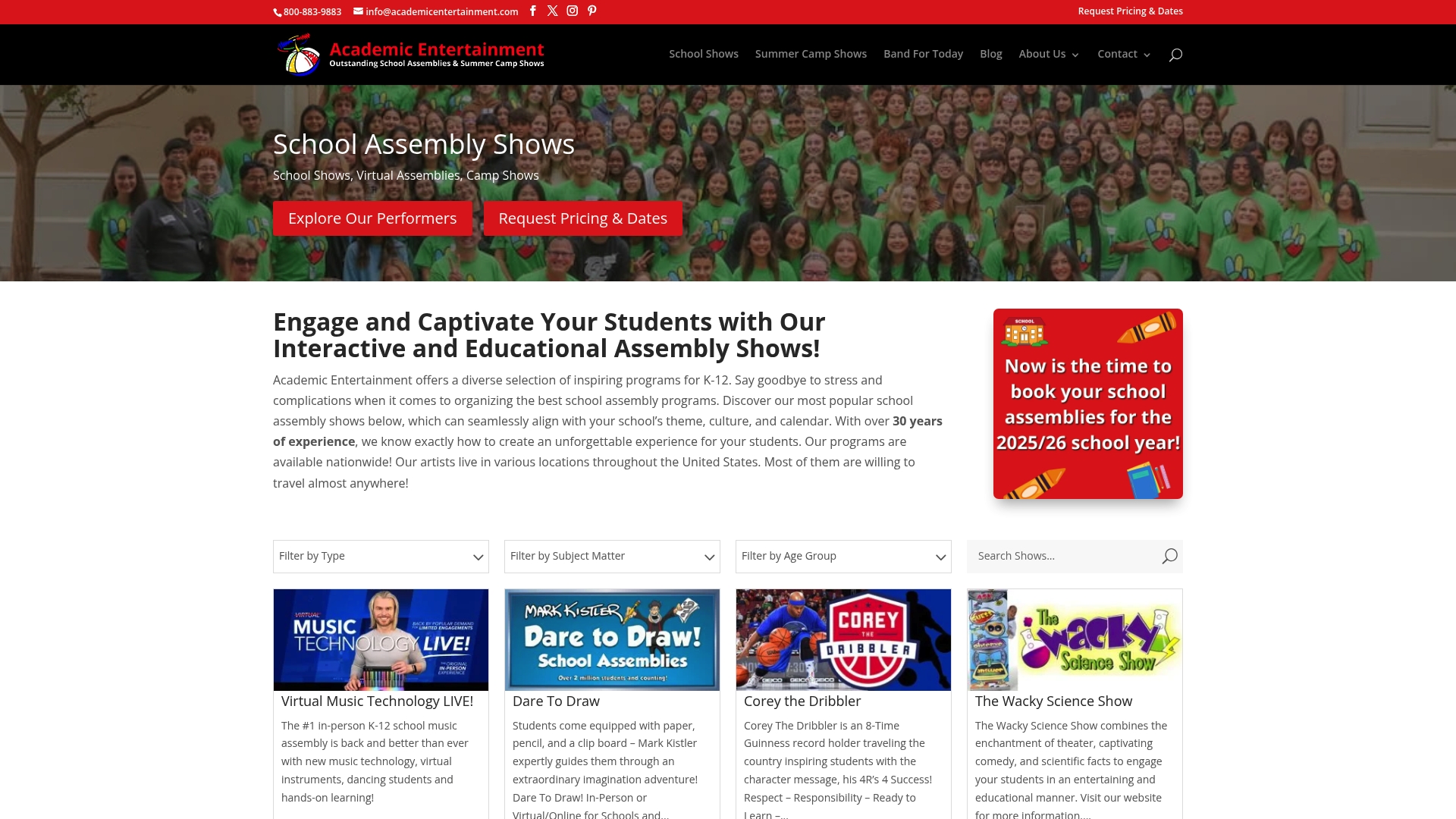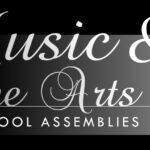More than eight in ten teachers report that school assemblies help build a sense of community and shape positive school culture. These gatherings do much more than deliver announcements. They offer students unique chances to celebrate achievements and connect as a group. Exploring what makes assemblies meaningful reveals how these events turn ordinary school days into chances for growth, learning, and shared experience.
Key Takeaways
| Point | Details |
|---|---|
| Purpose of Assemblies | School assemblies foster community spirit, celebrate achievements, and promote collective values beyond conventional classroom learning. |
| Types of Assemblies | Diverse assembly formats enhance student engagement and learning on various themes such as cultural awareness, arts, and life skills. |
| Integration with Curriculum | Aligning assemblies with curriculum themes reinforces learning outcomes and supports holistic student development. |
| Planning and Safety | Effective planning requires attention to content relevance, safety protocols, and presenter qualifications to ensure a positive assembly experience. |
Defining School Assemblies and Their Purpose
A school assembly is a structured gathering where students and educators come together for collective learning, communication, and community building. According to research from Wikipedia, these events can range from entire school populations to partial groups, serving multiple educational and social purposes.
Typically, school assemblies provide a platform for several critical functions. They might include important announcements, award ceremonies, special presentations, performances, or educational programs that transcend traditional classroom learning. What’s The Purpose Of An All-School Assembly highlights how these gatherings create shared experiences that reinforce school culture and values.
The core objectives of school assemblies extend beyond simple information sharing. As research indicates, they serve as a vital mechanism for:
- Fostering community spirit
- Delivering important institutional messages
- Celebrating student achievements
- Promoting collective values like respect and citizenship
- Providing opportunities for collective learning outside standard curriculum
By creating a unified space where students can learn together, school assemblies transform educational environments from isolated classrooms into interconnected learning communities. They represent more than just a break from routine—they are strategic opportunities for holistic student development.
Types of Assemblies in K-12 Education
K-12 schools host a diverse range of assembly types designed to educate, inspire, and engage students across different learning environments. According to research from K12 Academics, these assemblies can cover an extensive array of themes and purposes that extend far beyond traditional academic instruction.
Understanding the Role of Assemblies for Elementary Students reveals that assemblies can be structured in multiple formats to suit different educational objectives. Based on research from Twinkl, these formats typically include:
- Themed Assemblies: Focusing on specific topics like cultural awareness or social issues
- Circle Time: Interactive sessions promoting dialogue and community building
- Music Assemblies: Celebrating artistic expression and cultural diversity
- Teacher Swap: Unique events that provide alternative learning perspectives
The breadth of assembly topics is remarkable. According to K12 Academics, schools can organize assemblies on subjects ranging from career building and health fitness to multicultural awareness and motivational presentations. These might include performances, workshops, or interactive presentations covering areas like:
- Anti-bullying awareness
- Science demonstrations
- Arts and crafts showcases
- Career exploration sessions
- Cultural education programs
- Safety and life skills training
By offering such diverse assembly experiences, schools create dynamic learning environments that complement traditional classroom instruction and provide students with holistic educational opportunities.

Here’s a summary of common K-12 assembly types and their main purposes:
| Assembly Type | Primary Purpose | Example Activities |
|---|---|---|
| Themed Assemblies | Focused topic awareness | Cultural lessons Social issue talks |
| Circle Time | Community building & dialogue | Group discussions Sharing sessions |
| Music Assemblies | Celebrate arts & diversity | Performances Musical showcases |
| Teacher Swap | Alternate teaching perspectives | Guest lessons Special demonstrations |
| Career & Life Skills | Real-world preparation | Career talks Safety workshops |
| Science/Arts/Crafts | Hands-on learning | Demonstrations Showcases |
Academic, Social, and Emotional Advantages
School assemblies are far more than simple gatherings. School events create powerful platforms for holistic student development, addressing academic, social, and emotional growth simultaneously. According to research from Education News, these gatherings play a crucial role in shaping students’ educational experiences and contributing to their overall development.
Academically, assemblies provide unique learning opportunities outside traditional classroom settings. 5 Benefits of Group Learning highlights how collective experiences enhance knowledge retention and engagement. Students are exposed to diverse perspectives, interdisciplinary topics, and interactive learning methods that complement standard curriculum.
The social and emotional benefits are equally significant. These gatherings help students:
- Develop a sense of community belonging
- Build interpersonal communication skills
- Learn conflict resolution strategies
- Understand collective responsibility
- Celebrate diverse achievements
Moreover, assemblies serve critical emotional development functions. They create safe spaces for students to:
- Recognize and appreciate individual differences
- Build self-confidence through public recognition
- Experience collective emotional experiences
- Learn empathy and understanding
- Develop positive social interactions
By integrating academic content with social-emotional learning, school assemblies transform from simple gatherings into powerful developmental experiences that support students’ comprehensive growth.
Integrating Assemblies With School Curriculum
Curriculum integration transforms school assemblies from isolated events into powerful learning experiences. According to research from Living Values, assemblies can be strategically developed to encourage students’ reflection on universal values like cooperation, respect, and peace.
Can assemblies be customized to fit our school’s curriculum or theme week? demonstrates how these events can be tailored to complement existing educational objectives. By aligning assembly content with curriculum themes, schools can reinforce key learning outcomes across multiple domains:
- Personal development skills
- Social awareness
- Health education
- Citizenship understanding
- Spiritual and moral growth
The strategic integration of assemblies involves several key approaches:
- Matching assembly topics with current curriculum units
- Selecting presenters who can expand on classroom learning
- Creating reflection activities that connect assembly experiences to academic content
- Developing follow-up classroom discussions
- Designing assessment methods that measure assembly learning outcomes
By treating assemblies as an extension of classroom learning rather than a disconnected event, schools can transform these gatherings into meaningful educational experiences that support comprehensive student development and reinforce core academic and social-emotional learning objectives.
Key Considerations for Planning and Safety
Planning a successful school assembly requires careful consideration of multiple factors to ensure student safety, engagement, and educational value. According to research from K12 Academics, schools must thoughtfully select assembly topics that align with students’ developmental needs and educational objectives.
Understanding Why Book Educational Assemblies highlights the importance of comprehensive planning. Key safety and logistical considerations include:
- Verifying presenter credentials and background checks
- Ensuring age-appropriate content
- Preparing appropriate physical spaces
- Establishing clear behavioral expectations
- Developing emergency response protocols
Critical safety considerations involve multiple dimensions:
Physical Space Management
- Maintaining clear emergency exit pathways
- Ensuring adequate supervision ratios
- Checking venue structural integrity
- Controlling audience seating arrangements
Presenter and Content Screening
- Reviewing presentation materials in advance
- Confirming speakers’ professional backgrounds
- Aligning content with school’s educational standards
- Preventing potentially disruptive or inappropriate material
By implementing thorough planning protocols, schools can create safe, engaging assembly experiences that maximize learning while prioritizing student well-being and organizational risk management.
Maximizing Engagement and Lasting Impact
Engaging students during school assemblies requires strategic approaches that transform passive listening into active learning experiences. Student participation is the key to creating memorable, impactful events that resonate beyond the immediate moment.
How to Engage Students in Assemblies Effectively reveals that interactive elements are crucial for maintaining student interest. Drawing inspiration from programs like the Be Kind People Project, successful assemblies incorporate dynamic strategies:
- High-energy presentations
- Interactive storytelling
- Audience participation techniques
- Multi-sensory learning experiences
- Connecting content to students’ real-world experiences
Maximizing engagement involves several critical approaches:
Emotional Connection
- Using relatable storytelling
- Creating personal relevance
- Triggering curiosity
- Inspiring student reflection
Interactive Learning
- Encouraging active participation
- Incorporating multimedia elements
- Using humor and unexpected moments
- Designing call-and-response segments
By thoughtfully designing assemblies that speak directly to students’ interests and learning styles, schools can create transformative experiences that leave lasting impressions and drive meaningful educational outcomes.
Unlock the Full Potential of Your School Assemblies
If your school is striving to create meaningful assemblies that build community spirit and promote important values like respect and character development you are not alone. The challenge many educators face is turning these gatherings into truly engaging learning moments that leave a lasting impact on students’ social and emotional growth. With so many responsibilities it’s difficult to find programs that align perfectly with your curriculum or theme while also captivating young audiences.
Academic Entertainment understands these needs. Our platform offers over 40 years of experience providing customized school assembly programs that focus on enhancing academic, social, and emotional benefits highlighted in the article. Whether you want to address anti-bullying, diversity, health, or cultural awareness our live and virtual shows are designed to integrate seamlessly with your educational goals and keep students actively involved.
Explore our extensive range of educational assemblies at Academic Entertainment and discover how easy it is to book inspiring programs tailored for every grade and school event.

Bring your assemblies to life now and give your students the transformative experiences they deserve. Visit Academic Entertainment today to browse show options, learn about customization, and secure your next impactful school event. Let us help you turn ordinary gatherings into powerful celebrations of learning and community.
Frequently Asked Questions
What is the purpose of school assemblies?
School assemblies serve several purposes, including fostering community spirit, delivering important messages, celebrating student achievements, and promoting collective values. They provide opportunities for collective learning and enhance the overall school culture.
What types of assemblies are common in K-12 education?
Common assembly types include themed assemblies focusing on specific topics, circle time for community building, music assemblies that celebrate arts and diversity, teacher swap events for alternate perspectives, and career and life skills workshops.
How do school assemblies contribute to students’ academic and emotional growth?
Assemblies enhance academic growth by providing unique learning opportunities outside the classroom, while also fostering emotional development by helping students build interpersonal skills, self-confidence, and a sense of belonging within the school community.
How can schools effectively plan and ensure the safety of school assemblies?
Effective planning for school assemblies involves verifying presenter credentials, ensuring age-appropriate content, managing physical space for safety, and establishing behavioral expectations. Additionally, schools should develop emergency response protocols to ensure student well-being.




